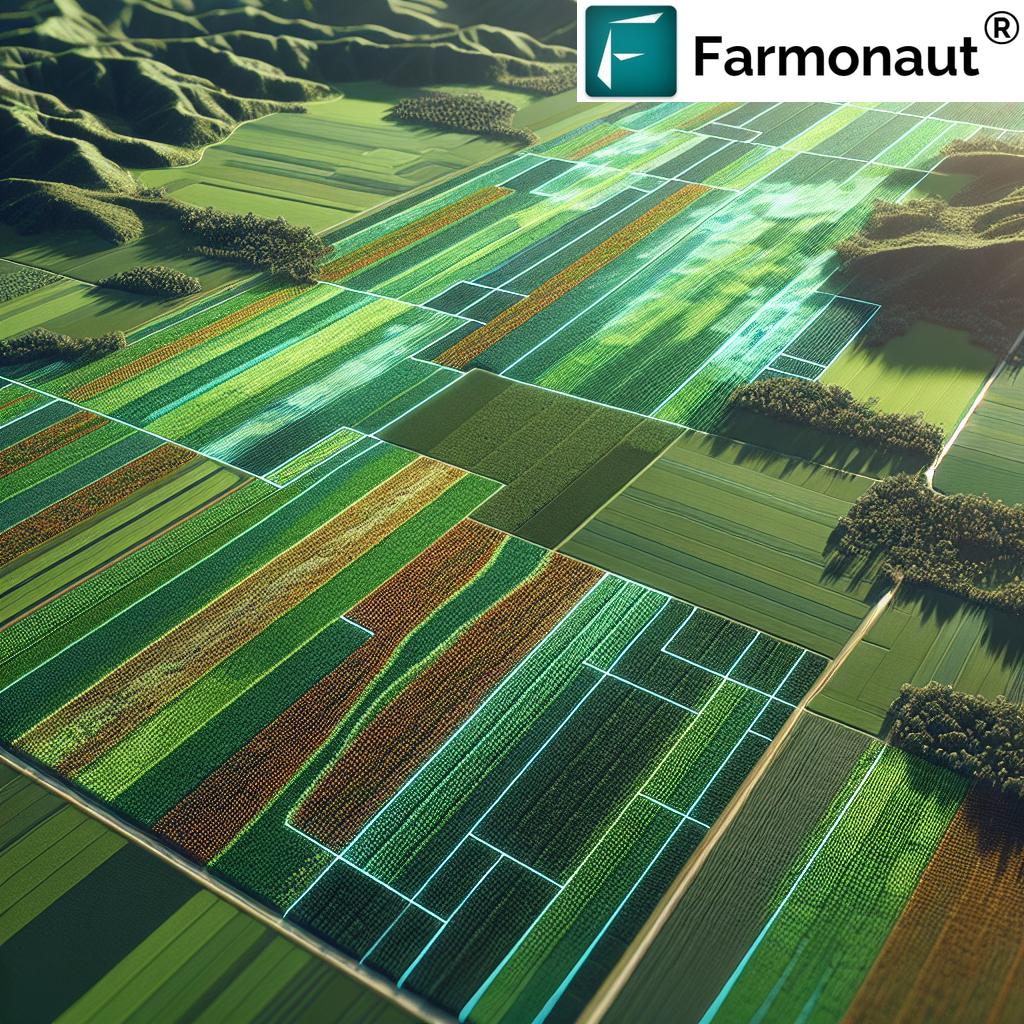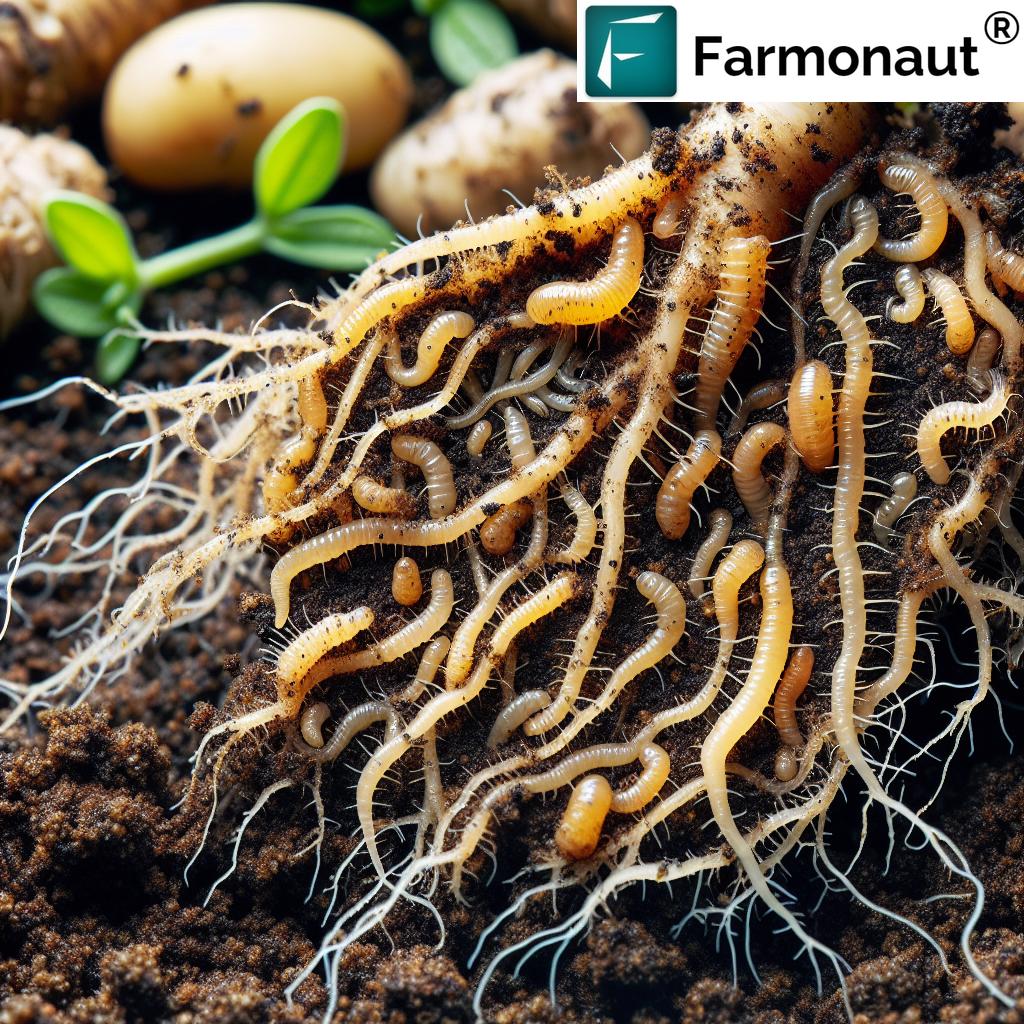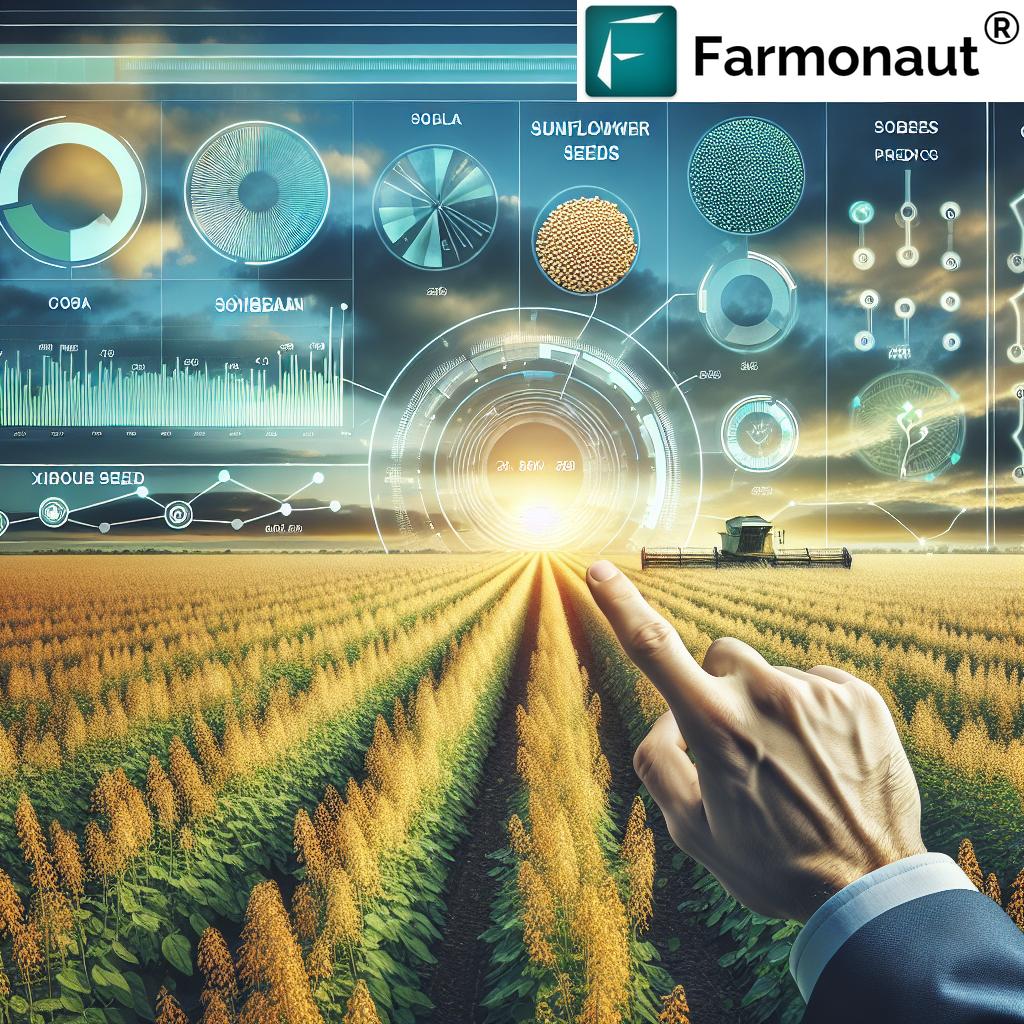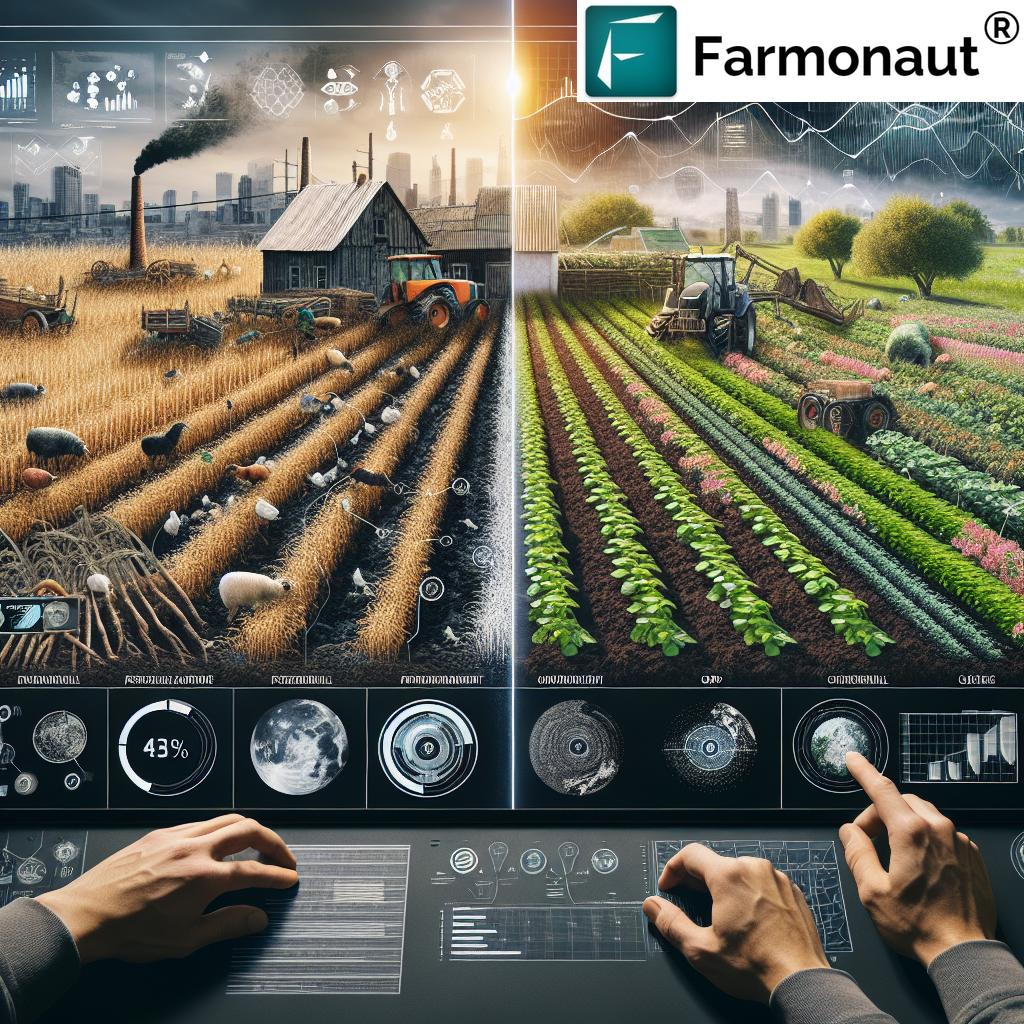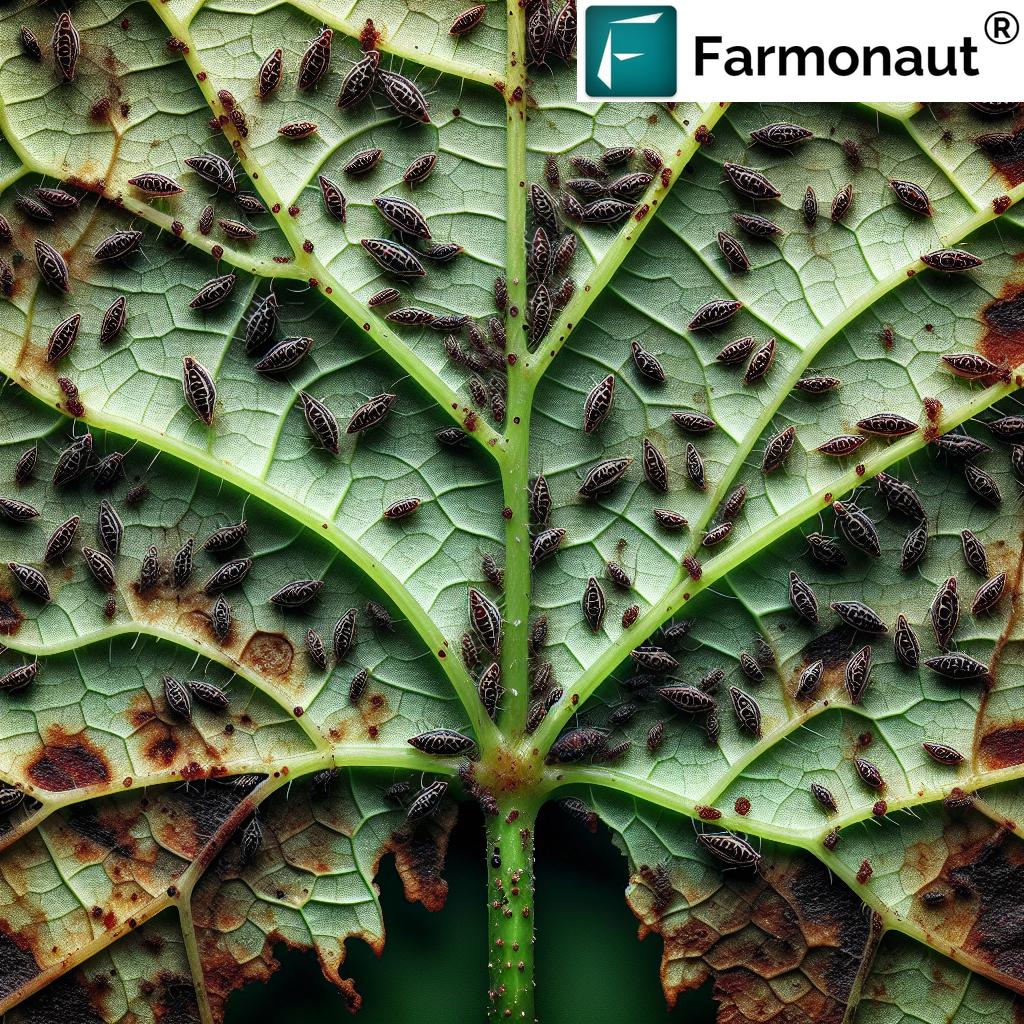Crop Yield Prediction: 7 Shocking Ways to Boost Output
“Machine learning models can improve crop yield prediction accuracy by up to 30% compared to traditional methods.”
Introduction
In a world where population continues to soar and sustainable food supply is more crucial than ever, crop yield prediction stands as a pivotal pillar in the realm of agriculture and forestry. Accurate forecasting empowers farmers and stakeholders to make informed choices, secure food security, and optimize the use of precious resources like water, fertilizers, and pesticides. With advancements in remote sensing in agriculture, machine learning crop prediction, and precision agriculture technologies, the methodology of predicting yields has experienced unprecedented transformation.
In this comprehensive guide, we’ll walk you through the critical importance of crop yield prediction, the science behind factors affecting crop yield, and the seven most effective—and sometimes shocking—ways to supercharge your crop output. We’ll explore the innovative solutions offered by Farmonaut — a global leader in affordable, scalable, and data-driven agricultural technologies.
Our journey will also delve into the state-of-the-art in soil health monitoring, predictive analytics in agriculture, and actionable advice to help you adopt the latest tools and techniques. From AI-powered interfaces to satellite-driven vegetation analysis, get ready to unlock strategies that transform plant growth, resource allocation, and overall farm management.
The Importance of Crop Yield Prediction in Modern Agriculture
Crop yield prediction is no longer just a technical task reserved for researchers; it’s the linchpin for sustainable agricultural practice and effective resource management at every scale, from smallholder farmers to national policy makers. Effective agriculture yield forecasting enables us to predict anticipated output, allocate resources (such as water and fertilizers) efficiently, and make sound economic decisions regarding planting schedules, marketing strategies, and sales. With climate volatility increasing year on year, and food demand on the rise, precision in yield predictions is a direct contributor to food security and market stability.
- Resource Optimization: Plan and optimize inputs like fertilizers and pesticides tailored to the unique needs of crops.
- Economic Planning: Minimize post-harvest losses by aligning storage and sales with anticipated harvest volumes.
- Food Security: Use reliable forecasts to prevent and address shortages before they escalate.
- Policy Formulation: Enable governments and agencies to design policies and allocate subsidies, imports, and exports based on data-driven projections.
Whether you’re a farmer optimizing crop practices, an agribusiness strategizing seasonal procurement, or a policy-maker ensuring nationwide food availability, accurate yield forecasting shapes every level of agricultural decision making.
Factors Affecting Crop Yield: The Science Behind Growth
To achieve reliable crop yield prediction, it’s critical to understand the multifaceted factors affecting crop yield. These elements intertwine at every level, creating unique patterns in growth and output across different regions, crop varieties, and management styles.
Key Factors Influencing Crop Yields
-
Weather Conditions:
Parameters like temperature, rainfall, humidity, and sunlight determine plant growth rates, flowering periods, and maturity times. -
Soil Properties:
Nutrient content, pH levels, and moisture retention capabilities play a direct role in supporting healthy crops and maximizing yield. -
Crop Management Practices:
Planting density, advanced irrigation methods, and effective pest control measures prevent resource competition, disease outbreaks, and stress conditions. -
Genetic Factors:
The genetic characteristics of the crop variety being cultivated can set the potential output ceiling for a particular plant, especially under ideal conditions. -
Environmental and Management Data:
Real-time insights from remote sensing and soil health monitoring bring unprecedented precision to understanding how environmental variables translate into yield outcomes.
7 Shocking Ways to Boost Yields Using Crop Yield Prediction
It’s no exaggeration that today’s precision agriculture technologies offer powerful, sometimes surprising, pathways to transforming yield outcomes. Here, we detail seven actionable techniques combining the best in data-driven prediction methods, real-time crop management techniques, and advanced analytics—each proven to make a major impact on your harvest.
1. Leverage Remote Sensing in Agriculture for Yield Forecasting
Remote sensing in agriculture is the invisible ally of modern farmers. By analyzing multispectral satellite imagery, we can monitor vegetation health using indices such as NDVI (Normalized Difference Vegetation Index). Key benefits include:
- Real-time detection of stress conditions and abnormal growth patterns.
- Large-scale, field-wide assessment of health and biomass for both current yield analysis and future predictions.
- Insight into the spatial and temporal variability in plant growth across diverse environments.
Solutions like Farmonaut utilize satellite-based crop health monitoring, aiding in precise input applications, better irrigation planning, and timely interventions. For actionable insights farmers can access Farmonaut’s Web App.
2. Apply Predictive Analytics in Agriculture Using Machine Learning Models
Machine learning crop prediction is revolutionizing yield forecasting. By feeding large datasets—ranging from historical weather records, real-time soil and environmental data, to crop management records—into advanced machine learning techniques (including neural networks, random forests, and decision trees), we can:
- Uncover non-linear relationships between variables otherwise invisible to traditional analysts.
- Integrate complex data sources: satellite imagery, IoT device outputs, market trends, and more.
- Increase accuracy as machine learning models continue to learn and adapt to new patterns in real-time.
The Farmonaut Jeevn AI Advisory System brings these capabilities to the field, offering AI-powered recommendations, personalized crop management advice, and precision scheduling based on dynamic data. You can explore AI advisory directly through the app.
“Remote sensing technology analyzes over 10,000 hectares of farmland daily for precise crop management insights.”
3. Real-time Soil Health Monitoring and Resource Allocation
Understanding soil properties—from nutrient content and pH levels to moisture retention capabilities—is paramount for robust yield outcomes. With real-time soil health monitoring powered by IoT devices, farmers and managers can:
- Dynamically match fertilizer and irrigation levels to actual soil needs.
- Prevent water and nutrient wastage, protecting the environment and lowering costs.
- Track changes after input use and modify resource allocation strategies for optimal growth and output.
Farmonaut’s platform supports soil moisture and nutrient tracking. APIs are available for farm integration, and comprehensive developer docs support data access.
4. Improve Management with Crop Simulation Models
Crop simulation models (also called process-based or growth models) estimate yields by simulating plant growth stages, integrating weather conditions, soil properties, and crop management practices into a single predictive framework. Using this approach, we can:
- Forecast the impact of seasonal changes, drought, or disease outbreaks on anticipated yields.
- Customize input schedules and irrigation based on simulated growth patterns.
- Calibrate for local conditions for unmatched accuracy.
Such models are especially useful for agribusinesses and larger farms. Software like DSSAT and CropSyst are commonly used, while integration with satellite imagery for crop yields further boosts power and usability.
5. Harness Blockchain-Based Traceability for Reliable Yield Data
Accurate, transparent records are the backbone of trustworthy crop yield prediction. Blockchain-based traceability solutions, like those from Farmonaut, revolutionize this space by:
- Ensuring every stage—from planting and management to harvest and transit—is immutable, traceable, and auditable.
- Reducing fraud in yield estimation records, crop loan verification, and supply chain transactions.
- Building trust among buyers, processors, and consumers with verified product origin and journey.
Discover the benefits of Farmonaut’s product traceability solutions for both small farms and corporate supply chains.
6. Integrate AI-Powered Advisory for Proactive Crop Management
Real-time notifications and AI-guided action plans enable farmers to act on early warnings—delivering much higher yield optimization. Farmonaut’s Jeevn AI Advisory System:
- Analyzes satellite and field data sources to generate individually tailored tips.
- Issues alerts for water stress, pest risks, or sudden weather shifts.
- Helps make proactive, informed decisions to reduce losses and boost output.
AI-driven approaches are part of a broader predictive analytics in agriculture movement, helping us move from reactive to truly proactive crop care. Experience the advisory in the Farmonaut App.
7. Employ Fleet, Carbon, and Large-Scale Resource Management Tools
The next evolution in crop yield prediction is seamless integration of fleet, carbon, and resource management solutions:
-
Fleet Management:
With Farmonaut’s fleet management tools, optimize vehicle and equipment logistics, ensuring input schedules and harvest operations stay on target for optimal yield. -
Carbon Footprinting:
Use real-time carbon footprint tracking to reduce environmental impact while monitoring strategies that support long-term field and forest health. -
Large Scale Farm Management:
The Farmonaut Agro Admin App brings scalable, satellite-backed yield prediction to plantations and agribusinesses, supporting entire regions or multi-field operations with precision.
Strategic management leads directly to yield improvements and sustainability: from reducing operational costs to minimizing losses and supporting compliance.
Comparative Table: Predictive Technology Impact
| Prediction Method | Estimated Yield Accuracy (%) | Resource Requirement | Implementation Cost (USD/ha) | Scalability |
|---|---|---|---|---|
| Traditional Statistical Models | 65-75 | Low | $5-15 | Medium |
| Process-Based Crop Simulation Models | 75-85 | Medium | $15-30 | Medium |
| Remote Sensing (Satellite Imagery, NDVI) | 80-90 | Medium | $10-25 | High |
| Machine Learning/AI Models | 85-95 | High | $20-50 | High |
| Hybrid Approaches (AI + Crop Simulation + Remote Sensing) | 90-97 | High | $30-70 | High |
Farmonaut: Making Precision Agriculture Accessible for All
The future of crop yield prediction lies in democratized, affordable availability of technology. Farmonaut bridges this gap with an integrated platform for farmers, agribusinesses, governments, and corporate supply chains. Here’s why our technology stands out:
-
Affordable Precision Agriculture:
Farmonaut’s satellite-driven tools eliminate the need for expensive hardware, making precision crop health monitoring and yield prediction accessible whether managing a single field or thousands of hectares. -
Real-time Insights with AI + Blockchain Integration:
Get actionable advisory, monitor vegetation health, and secure traceability—all in a user-friendly web and mobile app interface. -
Seamless Resource & Fleet Management:
Use Fleet Management and Carbon Footprint tracking for institutional efficiency and climate-positive agriculture. -
Access to Financing:
Farmers can accelerate access to loans and crop insurance verification thanks to satellite-based, fraud-resistant verification. -
Developer-Friendly APIs:
Easily connect your workflow or third-party platforms to Farmonaut’s satellite and weather API for custom analytics or operational dashboards.
Explore our API Developer Docs here. -
Full Traceability for Corporate Buyers:
Ensure product origin with blockchain and support transparent marketing claims through traceability solutions.
A Platform for Every User
- Smallholder farmers: Gain access to satellite insights and real-time crop status, previously available only to large institutions.
- Agribusinesses & growers: Manage entire estates with scalable tools, precision predictions, and actionable analytics.
- Governments/NGOs: Implement regional monitoring, policy enforcement, and subsidy planning at scale.
- Corporate/food processors: Guarantee transparency and food safety with traceable, blockchain-backed records.
- Research and Consulting: Integrate Farmonaut’s API for custom projects and national-level yield analysis.
Whether you’re looking for forest management and plantation advice or advanced farm-wide analytics, Farmonaut empowers you to make data-driven decisions for higher yields, lower costs, and greater resilience.
Crop Yield Prediction in Forestry: Techniques & Value
Forestry yield prediction is the parallel discipline to agriculture, but focuses on tree growth, timber output, and non-timber forest product supply. Here, precision is equally essential for resource allocation, planning, and assessing outputs for both conservation and economic gain.
Core Methods in Forestry Prediction
-
Growth Models:
Forecast tree growth and yield based on species characteristics, enviromental conditions, and historical datasets. -
Remote Sensing & Satellite Imagery:
Monitor forest health, biomass, and young tree establishment across vast regions with NDVI analysis. -
Statistical and Predictive Analytics:
Leverage historical forestry production data with climate variables for large-scale output forecasts and policy planning.
These techniques not only optimize forest economic yield, but also support conservation through precise estimation of biomass, carbon storage (see carbon footprinting), and biodiversity hotspots.
Top Challenges in Crop Yield Prediction
While remarkable technological advancement is reshaping agriculture, yield prediction faces several persistent hurdles:
-
Data Quality and Accessibility:
Even the best models falter without high-quality, consistent data across all climate zones and seasons. -
Climate Variability & Extreme Events:
Sudden weather changes—droughts, floods, or heatwaves—can disrupt patterns and break model assumptions. -
Interpretability of Complex Models:
Neural networks and AI systems can be ‘black boxes’—users may struggle to trust or validate outputs. -
Scalability:
Models must be scalable—performing well from individual fields to region-wide forestry assessment.
The solution? Adoption of open data APIs, farmer-friendly advisory tools, and hybrid models that blend explainability with advanced analytics.
Emerging Trends & Future Directions in Crop Yield Prediction
The next decade will see crop yield prediction become even more intelligent, integrated, and actionable:
-
IoT and Precision Agriculture Technologies:
Soil moisture sensors, weather stations, and field cameras feed live data to machine learning systems for dynamic forecasting. -
Big Data Analytics:
Vast datasets from diverse regions allow deep analysis of factors affecting crop yield and uncover novel patterns. -
Cloud Computing & API Integration:
Powerful, scalable computation—drive your own API integration with Farmonaut’s developer resources. -
Farmer Education & Community Engagement:
Knowledge-sharing through AI advisory and support apps, like those offered by Farmonaut, will accelerate adoption rates and boost field success.
Precision yield forecasting is fast becoming a standard, not an exception. Those who embrace it will lead the way in sustainable agriculture and food security.
FAQs: Crop Yield Prediction & Farmonaut
- Q: What is the main advantage of using satellite imagery in crop yield prediction?
A: Satellite imagery enables large-scale, real-time monitoring of crop health and growth patterns, enhancing prediction accuracy and making it possible to forecast yields with reduced human effort. - Q: How does machine learning improve agriculture yield forecasting?
A: Machine learning crop prediction can analyze vast, complex datasets and uncover nonlinear relationships between factors affecting crop yield. This leads to more precise, granular, and adaptive yield estimates. - Q: What agricultural sectors benefit most from Farmonaut?
A: Farmonaut’s technology serves individual farmers, agribusinesses, government agencies, NGOs, research organizations, and corporate supply chains—anyone needing reliable, scalable, and data-driven crop monitoring and prediction tools. - Q: Can Farmonaut help smallholder farmers?
A: Yes! Farmonaut democratizes precision crop management techniques, making high-tech yield forecasting tools accessible and affordable for small farms via web and app interfaces. - Q: How do APIs fit into my farm’s digital transformation?
A: Farmonaut’s API provides direct connectivity for your own platforms, ERP systems, and research databases, offering tailored integration of satellite and weather data for advanced analytics and automation. - Q: Where do I access Farmonaut’s full feature suite?
A: Download our Android app or iOS app, or access the Web App.
Conclusion
The future of agricultural productivity and food security hinges on our ability to accurately predict yields, optimize resource allocation, and adapt to changing weather and environmental conditions. By harnessing remote sensing in agriculture, machine learning crop prediction, soil health monitoring, and predictive analytics in agriculture, we unlock new dimensions of efficiency, sustainability, and profit.
At Farmonaut, our mission is clear: to put the most powerful, innovative farm management tools in the hands of every farmer and agribusiness, regardless of size or location. By leveraging hybrid predictive models, actionable AI, and transparent blockchain systems, we democratize success and secure resilient, scalable growth for the world’s food and forest systems.
Ready to boost your yield? Try precision agriculture now:
Explore Farmonaut’s affordable, user-friendly subscription plans below:
Harness the power of prediction, and watch your crops and forests reach their fullest potential.
For direct platform access, integrations, and more details, click here.





